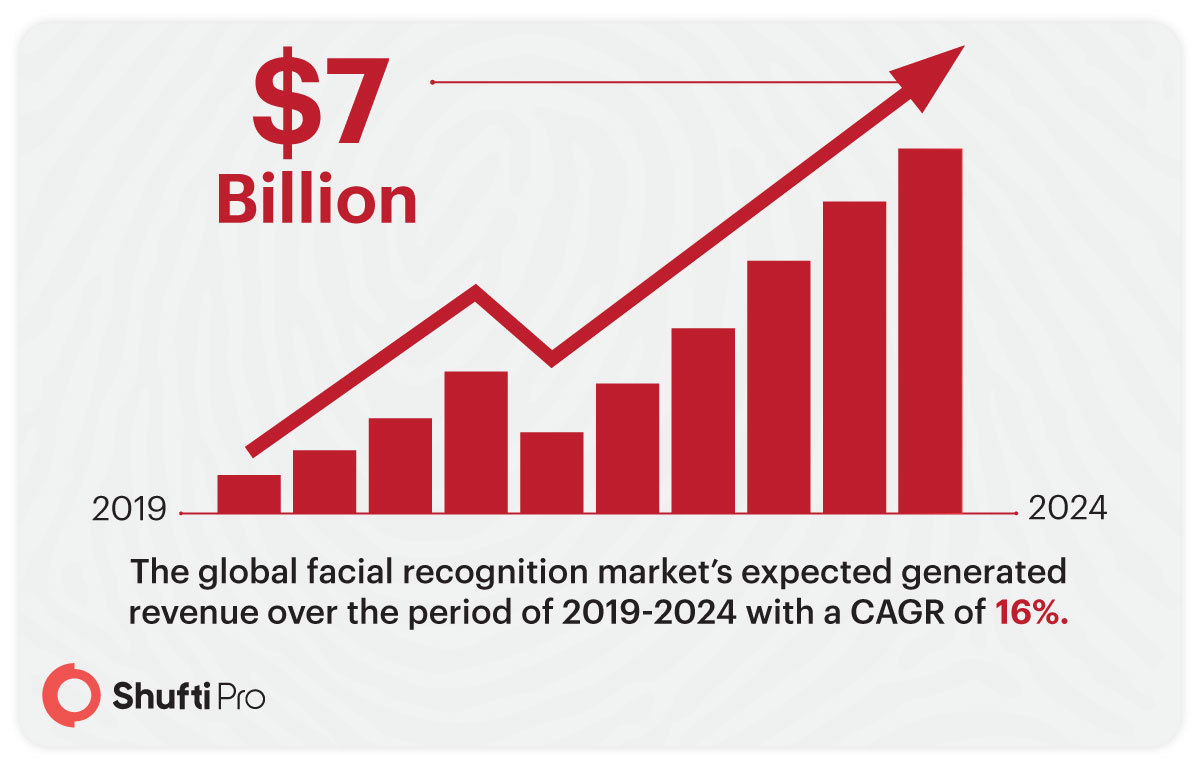Enhanced Digital Security with Facial Recognition and Liveness detection

The increasing number of cyber-attacks and online fraud calls out for strong security measures. Uncontrolled access over online user accounts is one of the major reasons for a wide array of cyber threats. Authorized access is the only solution that could help online businesses by allowing registered entities to participate in the digital space. Stronger Customer Authentication (SCA) methods are required in place to verify the identity of customers online that incorporate anti-spoofing measures.
In unsupervised authentication solutions, facial recognition technology is one of the leading technologies to cope up with digital frauds. Advanced biometric authentication solutions can fight against the sophisticated spoofing attempts of fraudsters who attempt to get unauthorized access to user accounts. Facial recognition employs a 3D liveness detection feature to determine the remote presence of the user at the time of verification.

Among all online user authentication techniques, facial recognition praised most worldwide. Various industries are integrating this technology into their platform to verify the identity of customers in a convenient manner. Facial recognition kiosks are now installed at airports, conferences, and public events, etc. to verify the individuals through facial biometrics. Similarly, businesses such as banks, eCommerce, and digital financial services providers integrate face recognition systems to authenticate their customers at each sign-in.
At any place, the advantage of user authentication is to curb the fraud rate that is rising each passing day. Facial recognition technology has the potential to reliably expose the fraudster through its powerful antispoofing algorithms. Liveness detection feature in biometric face verification detects the spoofing elements through its capability of distinguishing the mimicked motion or image from the movement of a real person.
What is Liveness Detection?
Liveness detection is a feature of facial recognition technology that distinguishes individuals from presentation attacks in the photos and videos. Liveness detection generally refers to fraud detection and prevention. Its algorithms are designed in such a way that it requires less to no user cooperation to ensure user experience.
Key Features of Liveness Detection
With the passage of time, biometric authentication systems have gained immense popularity and the liveness detection feature is getting improved with it due to the rising challenges and demand in the biometric identification market. The following are some key features of liveness detection:
- Artificial Intelligence plays a vital role in improving biometric security and reduces the rate of successful fraudulent attempts.
- Anti-spoofing methods detect suspicious elements in the user-uploaded picture. For example, photoshopped, static, and tampered user face images.
- 3D perception techniques are used for the actual measurement of the captured image.
- Micro expression analysis is performed that detects the minor facial movements of the user in live photo capture. These movements include lip movements, blinking of an eye, etc.
- Liveness detection ensures the physical presence of the user at the time of identity verification.

Benefits of Liveness Detection
Face Recognition technology allows a liveness detection method that is well-crafted as per the security demands of the digital space. It helps minimize the risks of spoofing attacks in the biometric facial recognition systems by detecting the suspicious elements in the user-uploaded picture.
- Liveness detection streamlines the user authentication method making it more secure when it comes to verifying the onboarding of customers to mitigate the risks of fraud.
- The feature is totally resistant to spoofing attacks and ensure customers’ online account protection through controlled access.
- It provides an optimal user experience through its convenient and faster authentication mechanism as compared to other traditional user authentication methods.
- Enhanced security can be ensured with liveness detection feature in facial recognition technology as it fights against the fraudulent attempts of users online.
- It has the potential of identifying Deepfakes through the deep learning algorithms.
- 3D mask attacks, screenshot pictures, distorted images, and eye cut photos can immediately be detected through liveness detection to discard the account access request and reduce the risk of fraud.
How Does Facial Recognition Work?
Shufti’s AI-powered facial recognition technology all the innovative sub-features that are part of liveness detection. The increasing risks of cyberattacks as a result of unauthorized access can be mitigated by the integration of facial recognition technology that verifies the face of a person in mere seconds. During the verification, a list of spoofing checks run which makes sure that no fake identity and its attempt get successful. The adoption rate of biometric facial recognition technology is very high and it is due to major other benefits that come along with it other than the security of the platform. Enhanced user experience and fast method of authentication is the demand of the digital customer base. At the same time, it is the responsibility of online merchants to be vigilant with respect to the security of the platform.
Recommended for you:
Facial recognition technology grooving into cruise ships for ID verification










